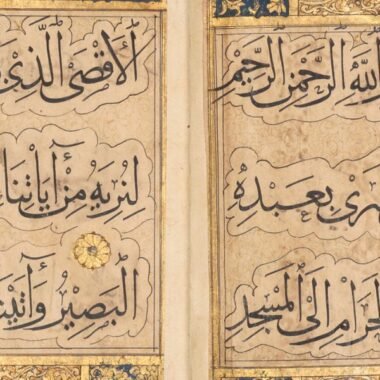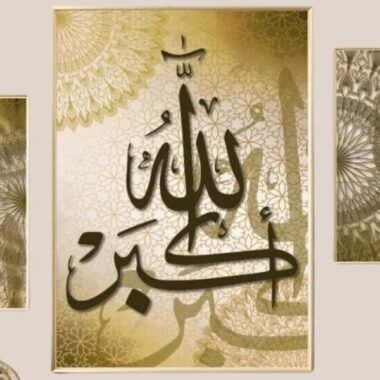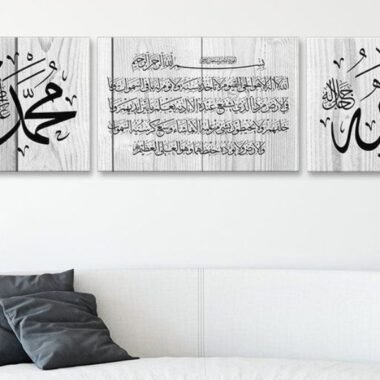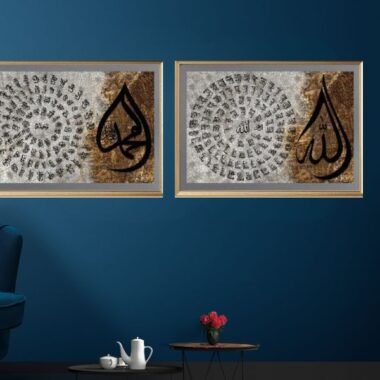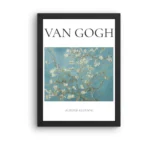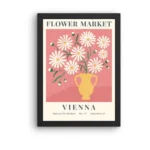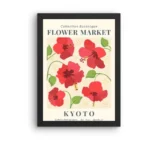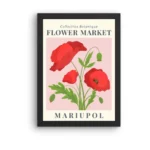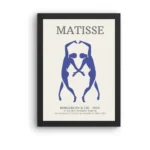Islamic calligraphy, an art form revered for its spiritual depth and aesthetic beauty, plays a pivotal role in Pakistani culture. La Gallery, nestled in the heart of Islamabad, aims to shed light on the profound significance and influence of Islamic calligraphy in Pakistan.
Origins of Islamic Calligraphy
Historical Roots
Islamic calligraphy finds its roots in the revelations received by Prophet Muhammad (PBUH) during the 7th century. The Quran, as the central religious text of Islam, became the catalyst for the development of calligraphy. The Prophet’s teachings emphasized the importance of knowledge and beauty, which were beautifully manifested in the form of calligraphy.
Development and Evolution
Over the centuries, Islamic calligraphy underwent a series of transformations. As Islam spread across different regions, calligraphers adapted their styles to reflect local cultures while maintaining the essence of Islamic teachings. Styles like Naskh, Diwani, and Thuluth emerged, each with its unique characteristics and aesthetics.
Islamic Calligraphy in Pakistani Culture
A Symbol of National Identity
In Pakistan, Islamic calligraphy serves as more than just an artistic expression; it’s a symbol of national identity and cultural pride. From the majestic architecture of mosques to the intricate designs adorning public spaces and homes, calligraphy is omnipresent.
Religious Significance
The Quranic verses and Hadiths inscribed in calligraphy are not mere decorations. They serve as powerful reminders of Islamic teachings, fostering spirituality and devotion among Pakistanis. The intricate designs and elegant scripts evoke a sense of awe and reverence, connecting believers with their faith.
La Gallery’s Commitment to Preserving Islamic Calligraphy
 Showcasing Masterpieces
Showcasing Masterpieces
At La Gallery in Islamabad, we have a deep appreciation for Islamic calligraphy’s cultural and artistic value. Our collection features masterpieces from renowned calligraphers, spanning various styles and periods, showcasing the diversity and beauty of this art form.
Supporting Local Artisans
La Gallery is committed to supporting local artisans and craftsmen. By providing a platform for emerging talents and established artists alike, we aim to nurture and preserve the tradition of Islamic calligraphy in Pakistan.
Educational Initiatives
We believe in the power of education and awareness. La Gallery organizes workshops, lectures, and exhibitions to educate the public about Islamic calligraphy’s history, significance, and techniques. These initiatives help in fostering a deeper appreciation and understanding of this timeless art form.
Role of Islamic Calligraphy in Contemporary Pakistan
Bridging Past and Present
While rooted in tradition, Islamic calligraphy continues to evolve and adapt to contemporary aesthetics. Modern calligraphers, inspired by the rich legacy of their predecessors, are creating innovative pieces that resonate with today’s audiences. This fusion of tradition and modernity keeps Islamic calligraphy relevant and captivating.
Cultural Diplomacy and Global Influence
Islamic calligraphy also plays a significant role in cultural diplomacy, representing Pakistan’s rich heritage on the global stage. Through exhibitions, collaborations, and international partnerships, La Gallery promotes Pakistani calligraphy and art, fostering cross-cultural dialogue and understanding.
Economic Impact
Beyond its cultural and spiritual significance, Islamic calligraphy also has economic importance. The demand for high-quality calligraphy artworks, both domestically and internationally, contributes to Pakistan’s art market and provides livelihoods for artisans and craftsmen.
Challenges and Opportunities
Preserving Tradition in the Digital Age
In an era dominated by technology and digital media, preserving traditional art forms like Islamic calligraphy poses challenges. However, it also presents opportunities. Digital platforms and social media can be leveraged to reach wider audiences, raising awareness and appreciation for Islamic calligraphy globally.
Investing in the Future
Investing in education, training, and infrastructure is crucial for the future of Islamic calligraphy in Pakistan. By supporting educational institutions, organizing training programs, and improving access to resources, we can ensure that the legacy of Islamic calligraphy continues to thrive for generations to come.
Conclusion
Islamic calligraphy is an integral part of Pakistani culture, reflecting the country’s spiritual, artistic, and historical heritage. La Gallery, located in Islamabad, is dedicated to preserving, promoting, and advancing this beautiful art form. Through our commitment to showcasing masterpieces, supporting local artisans, and fostering education and awareness, we aim to ensure that Islamic calligraphy continues to inspire and captivate audiences both in Pakistan and around the world.
For inquiries, to view our collection, or to participate in our educational initiatives, please contact La Gallery at 0330 1112220 or visit us in Islamabad.

